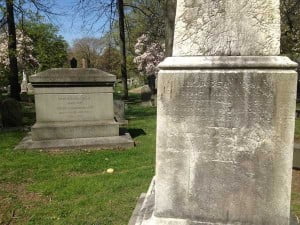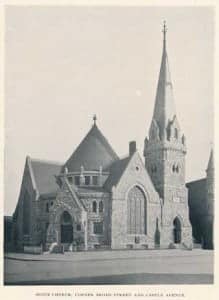A Union of Scottish Presbyterians
A noted Reformed Presbyterian theologian was once asked in the early eighteen hundreds in this country to identify his branch of the Presbyterian Church. He replied that he belonged to no branch of Presbyterians, only to the root of Presbyterianism. This answer revealed the deep view of history which Covenanter Presbyterians have of their church.
Any article on Scottish Presbyterians must really have an understanding first of the religious situation in Scotland, to say nothing of the Church of Scotland coming out of Romanism in the Protestant Reformation under reformer John Knox. We don’t have room enough to enter into that topic on this site, but a good perusal or even a scan of any of the books which deal with that history will bring you up to speed on this. Suffice to say that the American colonies were the happy recipients of countless Scot-Irish immigrants from Scotland through Ireland to this land. They brought with them their distinctives which were (1) a perpetual obligation to the Scottish covenants which their spiritual forefathers had signed, many with their blood, (2) the sole headship of Christ over all, and last, (3) the concept of Christian civil government, where the new nation would be recognized as a Christian nation under King Jesus.
In their Scottish history, there had been many breakaways from the Church of Scotland for alleged errors in doctrine and practice. One was called the Associate Presbytery, while another breakaway was called the Reformed Presbytery.
The latter was organized in the American colonies on March 9, 1774 as the first Reformed Presbyterian Presbytery of Pennsylvania. In fact, there is a blue historical sign by the state of Pennsylvania which recognizes this religious event beside one of the roads in Harrisburg, Pennsylvania. It was composed of three ministers: John Cuthbertson, William Lind, and Alexander Dobbins.
The first, John Cuthbertson, was a missionary who traveled all throughout Pennsylvania, visiting the scattered societies, as they were known, ministering to them by the Word and Sacrament. Often, their place of worship was under the sky and known as a Tent, such as the Junkin Tent in New Kingston, Pennsylvania. Rev. William Lind ministered in Paxton, outside of Harrisburg, Pennsylvania, in a church. And the third minister from Ireland, Rev, Alexander Dobbins, was ministering outside of Gettysburg, Pa. Thousands eat today as the Dobbins House Restaurant near the 1863 Gettsyburg Battlefield, not realizing that Rev. Dobbins had a pivotal part in the establishment of Presbyterianism in Pennsylvania.
That union of three ministers in the Reformed Presbytery lasted about eight years as another union took place in Pequea, Pennsylvania, on June 13, 1782 between the Associate Presbytery and the Reformed Presbytery. Somehow the Scottish distinctions between the two presbyteries were not as relevant in this new land. This produced the Associate Reformed Presbytery.
Words to Live By: Their current membership in the various Scottish Presbyterian Covenanter churches might be small in comparison with other Presbyterian churches, but in their minds and hearts, they are the root of Presbyterianism, never just another branch. It is good to have a clear sense of history of your church. In fact, this yearly historical devotional has that as one of its purposes. This contributor desires that you, the reader, know from where you have come in the past, so you won’t make the mistakes of the past, but labor effectively in the presence and future for King Jesus.




